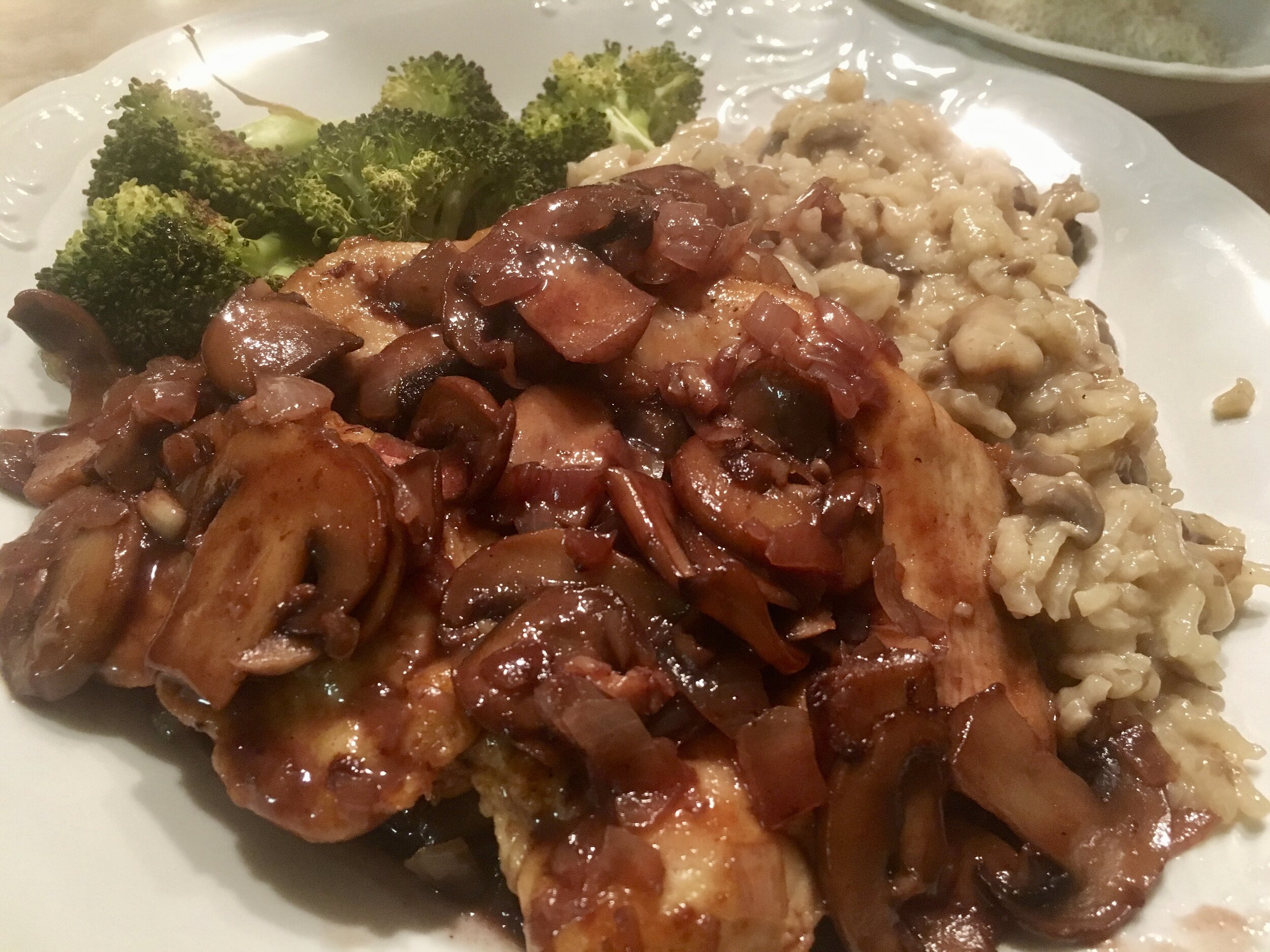On December 3, 1955, the S.S. President Wilson was bound for Yokohama, Japan. Part of the American President Line, the President Wilson was one of APL’s round-the-world passenger ships, which promised to be “your American Hotel Abroad” to passengers eager to travel the world in the years following the Second World War. Though the ship was at sea, somewhere in the Pacific, the team aboard the APL vessel were keen on delivering on their guarantee. Though the ship had left the West Coast shortly before, the dining room was to be transformed that night to offer guests a uniquely American experience:
Tonight, you will be taken back to “a night in Old San Francisco” at Steve Sanguinett’s Bohemian Restaurant…where the dim lights and with the rhythms of familiar Italian tunes, the rich and the poor, the peasant and the great, the bricklayer and the artist would gather. Here over their steaming plates of Spaghetti a la Genovese they would discuss their feats of conquests. Truly, the spirit of Sanguinetti will never die. And with the magic key to the famed Sanguinetti Cellar, the spirit of old Steve will be there to greet you. So zestfully frame your mood and enter into the festivity of an evening at old Sanguinetti’s which lives again tonight aboard the S.S. President Wilson.
You can read the menu below:
The 1955 menu is a moving tribute to one of the first Italian restaurants in the United States, Sanguinetti’s, which by 1888 was a fixture for San Franciscans of all stripes. In 1903, a writer for a California monthly magazine observed that at Sanguinetti’s, "one can drop into the little place almost any evening and hear the Italian folk song sung in the sweet, languorous music and tongue of South Italy” [1].
Restaurants have a special power to bring people together. For those aboard the S.S. President Wilson, in the middle of the dark, wide Pacific headed to a new, unfamiliar place, invoking a restaurant such as Sanguinetti created a safe harbor, so to speak; a place of comfort, hospitality, and familiarity.
Given today’s climate of social distancing and restaurant closure, I propose the following: in order to bring a touch of that Sanguinetti hospitality to your home, I’m going to present a dish that the passengers on the S.S. President Wilson dined on, if they had enough room: Chicken Marsala.
We can’t understand Chicken Marsala without the Marsala. For centuries, British gentry understood that grapes just don’t grow well in England. If they wanted wine, they would need to venture beyond their foggy isles to points further South. In the 18th century, due to regular disruptions in the access to wine coming from France, due to various wars and conflicts, Britons needed to find a more stable wine source. Consequently, Britons went to the Mediterranean—to places like Portugal, Spain, and Sicily—to set up export opportunities to sell wines back home.
Now the 18th century was an age of colonial expansion, and this meant long voyages. As a result, early casks of wine sent across the British Empire must have been rather, well, vinegary as they spoiled en route to the Thirteen Colonies or India. How would Britons get good wine far away from the vineyard?
The clever answer was fortification. Before transport, wine makers added distilled liquor to wine barrels as a preservative. The precipitous increase in the alcohol content killed any residual yeast fermenting the wine, and without any hungry yeast remaining to chow down, left undigested sugar in the barrel. The result? Wines both powerful and sweet, like Portuguese Port, Spanish Sherry, and yes, Sicilian Marsala.
Okay, so where does Chicken Marsala come from? It isn’t an OG Italian dish like pasta alla gricia, but rather the product of European fusionism. Some trace its origins to the early 19th century and to the rule of Queen Maria Carolina of Naples and Sicily.
From the early 18th century until the first phase of Italian Unification ended in 1861, the South of Italy and Sicily were ruled by a Bourbon (read, culturally French) monarch. Queen Maria Carolina—one of Marie Antoinette’s sisters—set up shop in Naples as Queen and felt the need for some of the culinary comforts of home, some familiar piece of home. Supposedly, she imported some French chefs, and they ultimately developed Chicken Marsala. These French chefs were referred to as local nobility as monsieur, which, in Sicilian dialect, morphed into monzu. These master monzus spread French culinary culture throughout the elites within the Kingdom of Two Sicilies, and ultimately, as the Kingdom fell at the end of the 19th century, their recipes found their way over here.
It’s a compelling argument (one made terrifically in this Eater video). Sicilian cucina povera is powerfully spiced and supremely Mediterranean, most often tomato-based and laden with garlic, olives, capers, and raisins, and Middle Eastern spices like saffron and cinnamon. Chicken Marsala, however, is a flour-dredged cutlet similar to what you’d do for Chicken Francese (stay tuned, but francese does mean “French” in Italian), cooked with butter, shallot, and mushrooms, sauced with a wine-reduction finished with cold butter. Yeah, that all sounds pretty French to me. But that doesn’t make Chicken Marsala any less associated with those Italian restaurants which have been satisfying customers since the late 1800s.
So here’s the recipe:
Chicken Marsala
1 pound chicken breasts or chicken breast Scaloppine—ask the butcher!
AP Flour, for dredging
1 pound mushrooms (whatever you prefer—button, baby bellas, even shittake, if you want some East meets West fusion)
4 tablespoons butter, divided
2 cloves garlic, minced
2 medium shallots, minced
1 1/2 cup marsala, port, or other fortified wine (If that’s hard to come by, maybe try substituting 1 1/2 cup of dry white wine, with two tbsp of vodka, and a tablespoons of brown sugar? Good luck!)
1/2 cup good chicken stock
1 packet unflavored gelatin
First thing, let’s deal with the chicken. I suggest buying it already pounded thin in cutlets to reduce labor, but if you’d like to get a workout in, you can pound it yourself. How? Take a full breast and butterfly it, or cut through the center and open it like a book. Then cover the cutlet in plastic wrap, get a mallet or a heavy can, and start beating it down. We’re looking for like 1/4 inch thickness.
Let it get to room temp and pat it dry. The dredge sets better with a dry piece of chicken. Season both sides with a little salt and pepper. Put some AP flour on a second plate, swish the chicken sheet through the flour, and knock off the excess. We’re shooting for this:
Now, the frying. Put a nice 1/4 of olive oil in a pan, and put one tablespoon of butter in the oil, for flavor’s sake. (Take the remaining three tablespoons of butter, cube them, and stow them in the freezer. Just trust me.) Make sure the fat gets good and hot, but not jumping mad, before putting chicken in the pot. A good way to test for that is a little flick of water—the oil shouldn’t erupt, but just gently burble after the water drips. Place your cutlets in the oil, and give them about 3-4 minutes a side until they’re golden.
Flip and repeat. Repeat until you’re through all the chicken:
While you’re cooking the chicken, might I suggest you get a little mise-en-place ready for the sauce? Mince your shallots and garlic and set them aside. Let’s get through these mushrooms. Give your mushrooms a nice rinse—they do live in dirt and rot, after all. Classically, mushrooms in Marsala are uniform slices. Want to see a neat trick I used?
Went through them like butter. Keep whatever fat is remaining in the pan after the chicken is all out and just dump the mushrooms in. They’re very watery creatures, so keep cooking until they give most of it up. They’ll start like this:
And with a little patience, you will be rewarded with this:
Now, you can add your alliums.
As those sweat it out, you can prep your liquid phase. Mix your wine and stock and sprinkle the gelatin packet over top. Let it reconstitute and read about gelatin for a moment.
Gelatin is the by-produce of collagen decomposition. Collagen is the most ubiquitous structural protein in animal bodies—it’s in bones and skin and hair and connective tissue. And when you break it down, by cooking bones and cartilage and meat with a great deal of connective tissue, you get gelatin, which is how gelatin is commercially produced. In the kitchen, and beyond Jello molds, gelatin gives a terrific mouth-feel to gravies and sauces. It’s unctuous, luscious, and lipsmacking. And it will give your marsala sauce a wonderful body to cling to the chicken and any carbohydrate you choose to serve it with.
When the alliums are soft and translucent, pour in your liquid phase. It’ll be clumpy and a little unappealing at this stage, but rest assured, it will soon be smooth as a Luther Vandross song.
As the sauce begins to become homogeneous and delicious, we’re in our final phase. Take that three tablespoons of cubed butter that you put in the freezer and pop them into the sauce. We’re doing something called monter au beurre. It’s a French technique designed to make our sauce smooth and beautifully glossy. Scientifically, we use chilled butter because frozen butter melts slowly, allowing globules of fat to slowly incorporate into the sauce, instead of becoming an unappealing oil slick on our finished sauce—which would happen if we dumped warm butter in. The chilled butter’s micro globules of fat allow for emulsification, or the fusion of the water and fat phases of our sauce, accomplishing both our texture goal of a creamy, smooth sauce, and our shimmer. Make sense?
Take your plate of chicken cutlets, and gently nestle them in the sauce—don’t forget to pour any juices back in the pan, too! Incorporate, and behold: you’ve made a Chicken Marsala to be proud of.
In terms of serving, I myself don’t think pasta is the move here. Roasted potatoes, or a mushroom risotto, are much more my style. Remember, Marsala isn’t really that Italian, is it?
I hope this Marsala nourishes you. I hope makes you feel like you’re at the neighborhood restaurant you’ve been missing.
You can picture the place. Candles on the table give off a dim, warm light like that from a campfire. Waiters greet you warmly—whether you’re a regular or not. Sinatra seeps like honey into the restaurant, underneath the clatter of plates and the soft tones of conversations and laughter. Portions are big, the chefs aren’t afraid of garlic, and no one minds if you use a crust of bread to sop up every last drop of sauce.
In the setting of a global pandemic, being unable to visit our favorite restaurants is not just an inconvenience, it is dispiriting. One of our safe places has been taken from us, meaning a goodbye to broad togetherness, to overeating and overdrinking, to easy laughter and surprise pieces of cake topped with one candle twinkling in the dim light of dining room.
But sometime in the near future, the candles in our favorite place will be lit again, and the Sinatra will play, and the wine will flow, and your favorite waiter will walk up to the table with a smile and ask, “Can I take your order?”
Works Cited
[1] Roland Whittle, "The Humbler Restaurants of San Francisco," Overland Monthly, No. 41 (May, 1903), p. 365; a well-referenced article about the history of Italian restaurants of old San Francisco can be found here.














